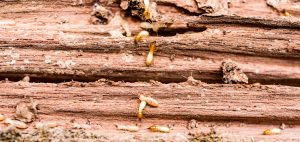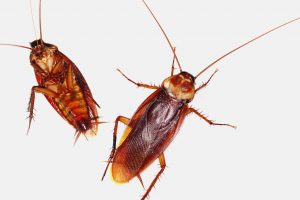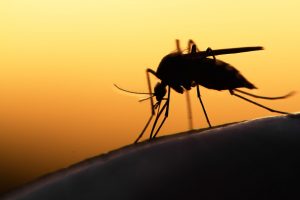Their body measures up to two inches. These wasps are tough. They have to be to survive their encounters with tarantulas. The insects are metallic blue-black with wings that are blue-black, orangish or mahogany in color. These wasps have aposematic coloring, which means, it warns its predators. This coloring warns potential predators: ‘this is a meal that would be painful, so why risk it?’. Their claws are hooked so can be used against their prey. These wasps are not terribly aggressive, and rarely sting humans, just do not harass them. Their exceptionally potent venom makes these one of the most agonizing insect stings in the world. Though the sting causes excruciating pain, it is not lethal. Most predators find this wasp’s venomous stinger, which is 1/3 of an inch long, reason enough to leave them alone. The roadrunner is one of its few real enemies.
Where Tarantula Hawk Wasps Live
Tarantula hawk wasps can be found, from rainforest regions to deserts, from India to Southeast Asia, Africa, Australia and America. About 250 species of these wasps live in South America alone! These insects are active during the daytime of the summer months, looking for their prey on the ground. Tarantula hawk wasps feed on nectar and pollen. They have been known to ‘fly under the influence’ after consuming fermented fruit. These wasps are one of the largest species of pollinators. The larval stages of the insect feed on tarantulas. This is why the female wasp captures tarantulas.
Search for the Perfect Nursery
After mating the female wasp hunts for a tarantula to become an edible nursery for her young. She tracks down tarantulas or their burrows, using her sense of smell. Once she finds her victim’s shelter she tricks the tarantula into coming out of the burrow, by moving the tarantula’s silk webbing cast at the burrows entrance. The tarantula then believes the web has captured a meal, so it comes out of the burrow to feed. Once the female wasp gets the tarantula out of the burrow, she uses her 1/3-inch stinger to stab her prey. The poison from the stinger, injected into the tarantula causes it to become paralyzed. She then drags her captive all the way to her burrow and lays her egg onto the paralyzed tarantula and then leaves.
Impressive Wrestling Move
If the female wasp encounters a tarantula along her way, she will wrestle it to the ground. She does this by grabbing hold of the tarantula by the leg and flipping it over on the back and then stings it. Eat your heart out Hulk Hogan! It takes only a few seconds for the poison to paralyze the tarantula for life, if you can call it life. In an attack, the wasp uses her antennae to probe the spider, which may raise its front legs and bare its fangs but the tarantula does not always fight back. She will drag it back into her own lair, which becomes a burial vault, lay a single egg on the spider’s abdomen, then plug the chamber. If the wasp succeeds in stinging a male tarantula, she will dig a burrow, drag the paralyzed spider inside, lay her single egg, and seal the chamber. The wasp may drink the body fluids oozing from the spider’s wounds or mouth to replenish nutrients and water she depleted during the attack.
Gruesome Formula and Tragic Slow Death
What makes this so gruesome is the female does not kill the tarantula, instead just paralyzes it. I see where this would provide the very freshest meals possible for their beloved young, but you would like to think maternal instincts included empathy. Not so in Tarantula Hawk Wasp’s moms. Yes, their young lack this attractive quality, as well. Once the egg hatches, the tiny grub, which at first was connected to the spider by the tip of its tail, bends over, attaches its head and begins to suck. It continues sucking until it matures to its final moult. It then rips open the spider’s abdomen, plunges its head and part of the thorax inside, and “feeds ravenously,” as one entomologist described it. Hopefully, at this point, the tarantula is finally dead. Yes, it was a slow, agonizing death that awaited this tarantula/nursery.
Students Hail The Tarantula Hawk Wasp
In 1989, New Mexico chose the Tarantula hawk wasps to be the official state insect. Students of Edgewood, New Mexico elementary school, elected this wasp from three candidates. I’m sure these children, as well as many others, find the Tarantula hawk wasps to be incredibly fascinating creatures, even if not the best of role models.
Boys Will Be Boys
Male tarantula wasps also lead a life of intrigue. They perform behavior called “hill-topping”. This is where they perch on taller vegetation or any higher vantage point. They are strongly territorial at these sites. This is for a legitimate reason: the good view of the surroundings and most importantly, of newly emerged virgin females, which may be ready to mate. Fascinating, and yet, somehow this behavior does not seem limited to this species.




